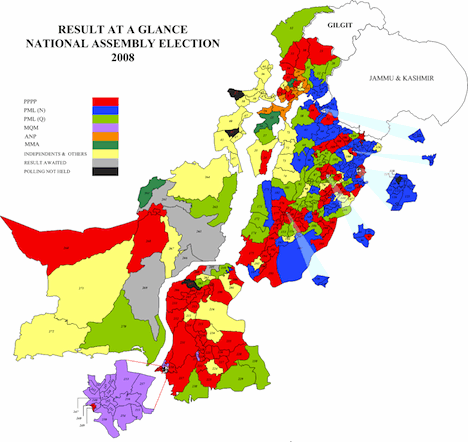Results are still coming in from Pakistan, but it’s become clear since Saturday that Nawaz Sharif and his party, had clearly won and will form the next government with Sharif leading a relatively strong government as Pakistan’s new prime minister. ![]()
The clear result and the presence of a strong government is good news for Pakistan and it’s good news for the rest of the world (including India, the United States and others), which has a stake in Pakistan’s stability. The problems that Sharif faces as Pakistan’s new leader are myriad — a floundering economy, a chronic energy crisis, and increasingly destabilizing attacks from the Tehrek-e-Taliban Pakistan (the Pakistani Taliban). That’s in addition to touchy endemic questions about cooperation with Pakistan’s military and intelligence leaders, ginger cross-border relations with India and the longstanding military alliance with the United States.
Amid that daunting agenda, it’s been easy to forget that keeping the nuclear-armed Pakistan united as one country is also a priority. But a quick look at the electoral geography of Saturday’s election demonstrates that Sharif should keep national unity atop his ledger as well.
The most surprising aspect of the election may have been the failure of Imran Khan and his anti-corruption party, the Pakistan Tehreek-e-Insaf (Movement for Justice or PTI, پاکستان تحريک), to make significant gains in Punjab province. Though Punjab is essentially the PML-N’s heartland, and governing Punjab has been the Sharif family business for about three decades, Khan was expected to do better throughout urban Punjbab, especially in Lahore. That turned out to have been wrong. The PTI barely won as many seats as the incumbent Pakistan People’s Party (PPP, پاکستان پیپلز پارٹی), which lost three-fourths of its seats, including the seat of its outgoing prime minister, Raja Pervaiz Ashraf.
But that’s one side of the more intriguing — and, I believe, more enduring — aspect of the Saturday’s result.
That’s the extent to which each of Pakistan’s four provinces essentially supported a different party. See below a map of results from 2008’s election. There are certainly regional strongholds, especially with the PML-N (shown below in blue) taking most of its strength in Punjab province. But the PPP (shown below in red) won seats in all four provinces of the country, including in Punjab. Likewise, the Pakistan Muslim League (Q) (پاکستان مسلم لیگ ق, or the PML-Q), which supported former military leader Pervez Musharraf throughout the 2000s (shown below in green), won strong support throughout the country.*
Now take a look at the election map of Saturday’s results from Pakistan’s Dawn:
The election map this time around isn’t nearly as messy — the PPP’s seats (shown in magenta) come nearly exclusively from Sindh province, the PML-N (shown in light blue) will form a government based almost exclusively on its strength in Punjab and without any of the national support that the PPP commanded in 2008. Khan’s PTI (shown in crimson), despite a handful of support in Sindh and Punjab, won most of its seats in the northwestern Khyber Pakhtunkhwa.
The PPP’s allied liberal Muttahida Quami Movement (MQM, متحدہ قومی موومنٹ) (shown in gray) won all of its seats in Karachi. That isn’t surprising given that it’s long dominated city politics within Karachi and has virtually no footprint outside Karachi, but it serves as yet another discrete mini-province even within Sindh.
In Balochistan, which borders Iran to its east and Afghanistan to its north, Balochi nationalists, sympathetic independents, and the conservative Islamist Jamiat Ulema-e-Islam (جمیعت علمائے اسلام) (shown in olive green) dominated.
But that’s not all — provincial elections were also held on Saturday to determine the composition of Pakistan’s four provincial assemblies, and there the contrast is even more striking: Continue reading The foreboding political geography of Pakistan’s general election results


